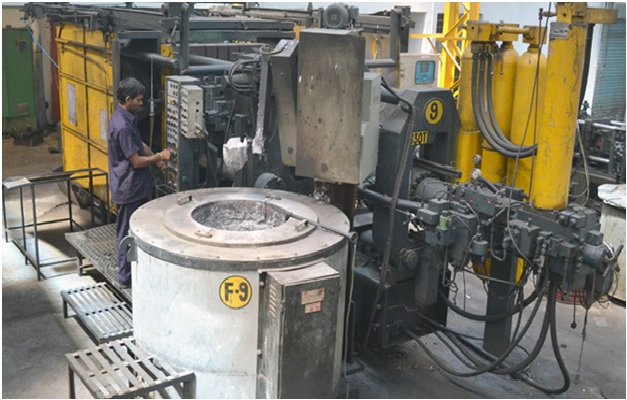

Contents
Hot chamber die casting involves placing the moulding cylinder directly into the molten metal. In contrast, in cold chamber pressure casting, the metal gets first heated in a furnace up until it passes its melting point. Then, it’s transported to the injection mechanism to be die cast.
First of all, the parts obtained by cold die casting are more durable thanks to their higher density. They stand up to impacts and pressure better which prolongs their lifespan. Also, cold-chambered metal boasts a smoother finish which increases its marketing value. This method can be used with metals whose melting point is high, such as aluminum and brass. Given the higher speed of the injection process, the metal gets denser and more durable.
Consisting of two steps, the cold die casting lasts longer, which leads to a lower number of parts produced in a given time. Also, the method requires more pressure to push the needed amount of metal into the cast. The metal exposed to cold chamber casting is more vulnerable to oxidation and contaminants, if the production site doesn’t comply with the standards of quality and cleanliness.
Yes, cold chamber die casting is more expensive than the hot chamber process, and there are some reasons for it. First of all, cold casting machines have to apply more pressure to push the metal into the specially shaped cavity. Hence, there is a need for more powerful machinery. Also, cold casting implies two processes that take place in separate cavities: the furnace where the metal is heated to melting state and the casting chamber where it is die cast.
This makes the whole process quite expensive compared to the hot chamber casting, where there is a single machine that integrates both the mold and the heating element. However, with higher price comes higher quality and better durability. The parts are more resistant to tension, impacts, and temperature shocks, which minimizes the need for repairs and prolongs their service time.
If you look for a precise metal casting process, you can consider both methods, as they are equally accurate in giving metal a certain shape and size. However, it is important to mention that cold casting provides a finer finish and thinner falls, making the parts look neat, smooth and glossy. The finish the hot chamber casting provides is also quite smooth, but not as impeccable as the one its counterpart can give.
Generally, cold chamber casting is considered a more versatile process, because it allows for the metal to be cast in a wider variety of shapes. Using powerful machines and a higher pressure, the process can force the metal in different molds, ranging from standard shapes to more complex ones. This helps cold casting companies work with various industries and meet their moulding needs equally successfully.
Who doesn’t love chocolates, right? No matter the age, a chocolate bar with a customized…
How to Relieve Eye Strain: Do you find yourself blinking throughout the day? Do your…
Pagalmovie’s extensive collection of Bollywood, Hollywood, and regional films has made it associated with free…
For an excellent Google Ads campaign, it is essential to understand the PPC auction process.…
As of 2024, the number of online shoppers worldwide reached approximately 2.71 billion, accounting for…
For a retailer to provide their customers with the products they want, when they want…